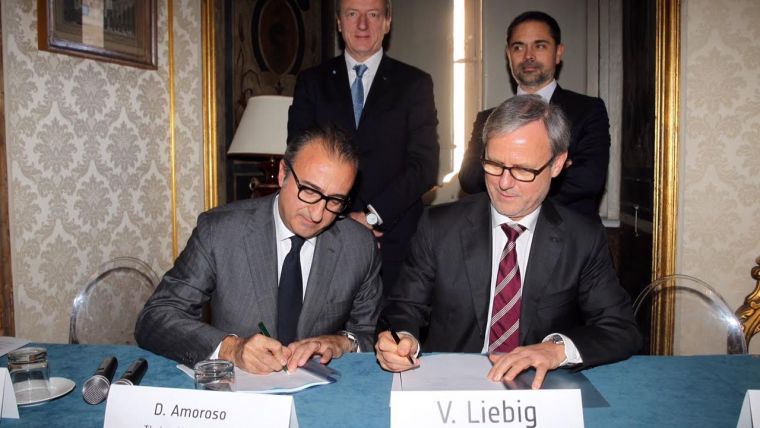ESA Signs Deal for Two New Sentinel-1 Satellites
ESA has ensured the continuation of the Sentinel-1 Earth observation satellite series for Europe’s Copernicus environmental programme by ordering two more satellites. The EUR400 million contract was signed on 15 December with Thales Alenia Space of Italy to build Sentinel-1C and -1D. Thales Alenia Space will lead a consortium of 60 European companies, including Germany’s Airbus Defence and Space, responsible for the radar instrument.
Launched in April 2014, Sentinel-1A was the first of the dedicated Copernicus series for monitoring the land and oceans, and helping out during natural disasters. Composed of two polar-orbiting satellites operating day and night, the Sentinel-1 mission provides radar coverage regardless of the weather. The coverage will be boosted following the launch of twin Sentinel-1B next April.
Environmental mapping
The first satellite has already helped out in an emergency situation. Some of its very first images were crucial in helping authorities in Namibia and the Balkans to respond to serious floods – this while the satellite was still being commissioned. Since then, experts have begun using it to monitor the marine environment. In particular, the Copernicus Marine Environment Monitoring Service calls on Sentinel-1 imagery to create ice charts showing details of ice conditions in a variety of regions, including warnings of icebergs drifting along shipping routes to alert vessels.
Sentinel-1A has also monitored losses from ice caps and ice sheets, such as the Austfonna ice cap in Norway’s Svalbard archipelago. The first dedicated campaign observing the Greenland ice sheet was completed in March. Furthermore it has mapped ground movements related to earthquakes in the Napa Valley of the USA, in Nepal, Chile and Afghanistan, as well as in eruptions of a number of volcanoes worldwide, such as Fogo, Villarrica and Piton de la Fournaise.
The above are just a few examples of how Sentinel-1 data is being exploited. The mission also routinely contributes to observing oil spills, sea state, subsidence, landslides, land cover, agriculture, forestry and soil moisture, among others.
The huge success of Sentinel-1A is highlighted by the number of users and downloads of data: more than 15,000 users have registered on the Sentinel's scientific data hub, 2.5 million products have been downloaded – corresponding to 3 million GB of data – and 350,000 products are available online for download.
Future
With this new contract, ESA and its partners take on the commitment to prepare the replacements for Sentinel-1A and -1B, ensuring that users will have the data to feed the Copernicus services in the future.
Volker Liebig, ESA’s Director of Earth Observation Programmes, said at the signing that the radar satellites Sentinel-1C and -1D will extend the operational monitoring component of Copernicus at least until the end of 2020. This is crucial for many operational and governmental applications but also for growing private sector applications, he added.
Nowadays, radar satellites are covering such a wide spectrum of applications that they are indispensable for environmental monitoring and oceanography, as well as for disaster management and security issues, including growing information needs, to feed more and more people, Liebig concluded.

Value staying current with geomatics?
Stay on the map with our expertly curated newsletters.
We provide educational insights, industry updates, and inspiring stories to help you learn, grow, and reach your full potential in your field. Don't miss out - subscribe today and ensure you're always informed, educated, and inspired.
Choose your newsletter(s)
























